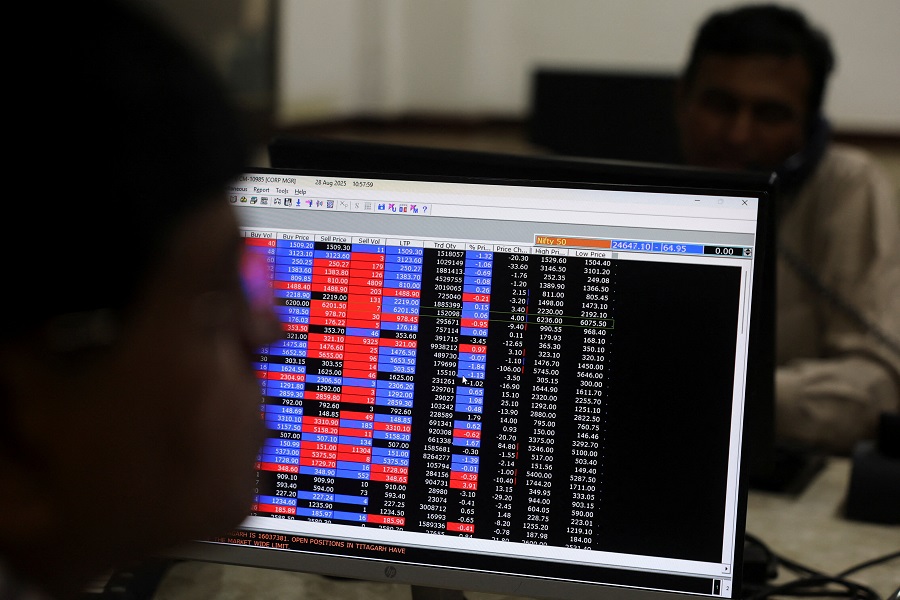November 2022: Gold Outlook By Chirag Mehta and Ghazal Jain, Quantum AMC

Gold Outlook for November - 2022 by Chirag Mehta, CIO & Ghazal Jain, Fund Manager, Quantum AMC
Even as international gold prices moved between $1,620 and $1,720 per ounce in October, gold bears outpaced gold bulls, bringing prices down by 2%, and ending the month close to $1,638 per ounce. This rangebound movement was a result of markets digesting elevated inflation prints and pricing in outsized interest rate hikes in developed economies, despite the macroeconomic and geopolitical outlook remaining extraordinarily uncertain and keeping gold relevant.
Domestic gold prices ended the month only 0.7% lower supported by a depreciating rupee and festive demand on Diwali and Dhanteras.
The fall in gold prices was a result of higher-than-expected September readingsof US Consumer Price Inflation (CPI) and US Core Personal Consumption Expenditure (Core PCE) at 8.2% and 5.1% respectively, which increased investor anticipation of aggressive policy moves by the US central bank. This led to US treasury yields inching higher and taking a toll on gold. Benchmark US 10Y bond yields jumped up to 4.3% at one point, the highest since 2007 before retreating to 4% levels by the end of the month. Gold’s other driver, the US dollar also went through its fair share of volatility reacting to alternating hawkish and dovish Fed bets and tightening by Bank of England and ECB which reduced its attractiveness, before ending the month marginally lower, but still at 20-year highs.
Gold is entering November expecting the Fed’s fourth consecutive 75 basis point hike, as the latest data from the US economy shows that consumer spending, job openings, wage growth, and inflation expectations haven’t cooled off as much as the Fed would like. Monetary policy tightening for the next couple of months, with markets expecting the Fed terminal rate to be 4.75-5%, would thus keep the pressure on gold prices, capping the upside.
But the perception that the US economy is holding up well despite the 300 basis points of interest rate hikes in 2022 may not be accurate. That’s because policy moves usually take about two-three quarters to work their way through the economy. Although the Q3 US GDP growth came in positive at 2.6%, an in-depth reading of the number shows that it was driven by the higher value of exports, which in turn was driven by a stronger dollar. Data from previous recessions shows that it isn’t uncommon to have a positive GDP quarter within a recession. In addition to the 10y-2y and 30y-5y spreads which have been mostly negative since April, other closely watched spreads in the Treasury market like 10y-3m and 18m-3m have also either flipped below zero or are about to, spurring fresh warnings that a recession is inevitable. US manufacturing barely expanded in October with the S&P Global USManufacturing PMI data falling to 50.4, down from September's reading of 52.
In response to the Federal Reserve’s aggressive rate hikes, 30-year mortgage rates in the US have surpassed 7% for the first time in two decades. The higher rates are scaring away buyers and choking the housing market as sales plummet and prices decelerate. The
question now is whether the fast-deteriorating housing market will be the first to break and push the US into recession just like it has in the past.
While inflation is looking persistent, the Fed’s willingness to fight it may not be. Given that gold registered a seventh consecutive monthly decline in October, current prices can be a good entry point for gold investors to capitalize on the upside in prices from the recession, risk aversion, and end-to-rate hikes that are to eventually follow.
Apart from inflation and growth, political considerations and financial stability will also weigh on the Fed’s future policy as the American government’s debt reached an all-time high of $31 trillion in October.
Apart from inflation and growth, political considerations and financial stability will also weigh on the Fed’s future policy as the American government’s debt reached an all-time high of $31 trillion in October.
Meanwhile, there is no end in sight to the war in Europe. Flare-ups in tensions between the warring nations continue to complicate the global energy supply chain and inflation situation. Russia’s latest exit from a deal facilitating grain exports from Ukraine threatens to worsen already severe inflation and deepen a global food crisis. China’s zero-covid policy isn’t helping either.
Indicative of the prevailing global uncertainty and need for diversification, global central banks bought a record 399 tons of gold ($20bn) last quarter taking full-year purchases to 673tons, the highest since 1967.Investors too should acknowledge the risks in the current economic environment and diversify their portfolios with a gold allocation.
Above views are of the author and not of the website kindly read disclaimer
















